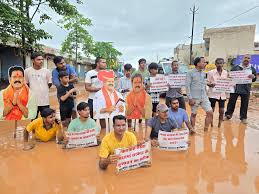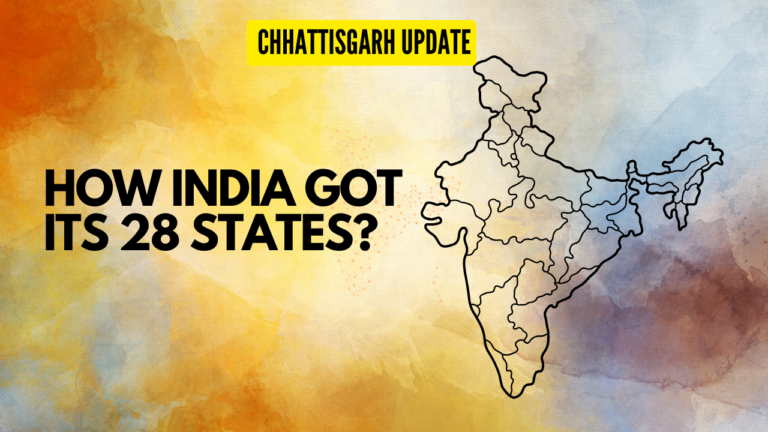Mungeli district, situated in the central Indian state of Chhattisgarh, is a region steeped in culture, history, and diversity. Established on January 1, 2012, after being carved out of Bilaspur district, Mungeli has quickly made a name for itself. In this article, we will delve into the unique aspects of Mungeli district, including its demographics, culture, and recent cinematic fame.
Administrative Setup
Mungeli district, with its headquarters in Mungeli town, is governed efficiently under the leadership of Shri Rahul Dev, the current Collector. The district is further divided into three tehsils: Mungeli, Lormia, and Patharia. This administrative division ensures that the district’s operations run smoothly, serving its residents effectively.
Mungeli district, with its headquarters in Mungeli town, is governed efficiently under the leadership of Shri Rahul Dev, the current Collector. The district is further divided into three tehsils: Mungeli, Lormia, and Patharia. This administrative division ensures that the district’s operations run smoothly, serving its residents effectively.
Cinematic Fame: Chaman Bahaar
One of the noteworthy mentions that put Mungeli on the cinematic map is the Netflix movie “Chaman Bahaar.” The movie’s plot revolves around a young man who runs a paan thela (betel leaf stall) on a semi-deserted road in Mungeli district. Actor Jitendra Kumar plays the lead role, and the film showcases the beauty and essence of the region.
One of the noteworthy mentions that put Mungeli on the cinematic map is the Netflix movie “Chaman Bahaar.” The movie’s plot revolves around a young man who runs a paan thela (betel leaf stall) on a semi-deserted road in Mungeli district. Actor Jitendra Kumar plays the lead role, and the film showcases the beauty and essence of the region.
Demographics
Understanding the demographics of Mungeli district is essential to appreciate its diverse population and cultural fabric.
Understanding the demographics of Mungeli district is essential to appreciate its diverse population and cultural fabric.
Religious Diversity
As of the 2011 census, Mungeli district reflects a harmonious religious diversity. Hinduism is the predominant religion, with 97.01% of the population adhering to it. Other religious communities, including tribal religions (1.41%), Islam (0.82%), and Christianity (0.50%), coexist in this culturally rich district. A small percentage falls under the category of ‘Other or not stated’ at 0.26%.
As of the 2011 census, Mungeli district reflects a harmonious religious diversity. Hinduism is the predominant religion, with 97.01% of the population adhering to it. Other religious communities, including tribal religions (1.41%), Islam (0.82%), and Christianity (0.50%), coexist in this culturally rich district. A small percentage falls under the category of ‘Other or not stated’ at 0.26%.
Population and Growth
Mungeli district had a population of 701,707 as per the 2011 census. This population is distributed across urban and rural areas, with 9.33% residing in urban centers. Over the decade from 2001 to 2011, the district witnessed a population growth rate of 38.29%. Additionally, 17.19% of the population is under the age of 6 years.
Mungeli district had a population of 701,707 as per the 2011 census. This population is distributed across urban and rural areas, with 9.33% residing in urban centers. Over the decade from 2001 to 2011, the district witnessed a population growth rate of 38.29%. Additionally, 17.19% of the population is under the age of 6 years.
Gender Ratio and Literacy
Mungeli district maintains a balanced gender ratio, with 974 females per 1000 males. The district takes pride in a literacy rate of 64.75%, emphasizing the importance of education in the lives of its residents.
Mungeli district maintains a balanced gender ratio, with 974 females per 1000 males. The district takes pride in a literacy rate of 64.75%, emphasizing the importance of education in the lives of its residents.
Scheduled Castes and Scheduled Tribes
Scheduled Castes and Scheduled Tribes make up a significant portion of the district’s population, accounting for 27.70% and 10.37%, respectively. This diversity adds to the cultural richness of the region.
Scheduled Castes and Scheduled Tribes make up a significant portion of the district’s population, accounting for 27.70% and 10.37%, respectively. This diversity adds to the cultural richness of the region.
Language Diversity
The linguistic landscape of Mungeli district reflects its cultural diversity. According to the 2011 Census of India, Chhattisgarhi is the primary language spoken by 97.25% of the population, followed by Hindi at 1.45%. A small percentage of the population also speaks languages like Gondi, Sindhi, Kurukh, and others, contributing to the linguistic tapestry of the district.
The linguistic landscape of Mungeli district reflects its cultural diversity. According to the 2011 Census of India, Chhattisgarhi is the primary language spoken by 97.25% of the population, followed by Hindi at 1.45%. A small percentage of the population also speaks languages like Gondi, Sindhi, Kurukh, and others, contributing to the linguistic tapestry of the district.
Geography
Mungeli district covers an area of 2,750.36 square kilometers (1,061.92 square miles). It is known for its natural beauty and landscapes, making it an attractive destination for those seeking tranquility and serenity.
Mungeli district covers an area of 2,750.36 square kilometers (1,061.92 square miles). It is known for its natural beauty and landscapes, making it an attractive destination for those seeking tranquility and serenity.
Cultural Heritage
Mungeli district, with its rich cultural heritage, offers a unique blend of historical and religious sites.
Mungeli district, with its rich cultural heritage, offers a unique blend of historical and religious sites.
Conclusion
Mungeli district in Chhattisgarh, India, is a land of diversity, where various cultures, religions, and languages coexist harmoniously. With its recent cinematic fame, it has gained recognition on a broader scale. As the district continues to grow and evolve, Mungeli remains a place of cultural significance and natural beauty, inviting travelers and explorers to experience its unique charm.
Mungeli district in Chhattisgarh, India, is a land of diversity, where various cultures, religions, and languages coexist harmoniously. With its recent cinematic fame, it has gained recognition on a broader scale. As the district continues to grow and evolve, Mungeli remains a place of cultural significance and natural beauty, inviting travelers and explorers to experience its unique charm.



